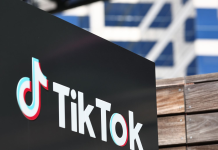Top executives at Texas-based software company SolarWinds Corp, Microsoft Corp and cybersecurity firms FireEye Inc and CrowdStrike Holdings Inc defended their conduct in breaches blamed on Russian hackers and sought to shift responsibility elsewhere in testimony to a US Senate panel on Tuesday.
One of the worst hacks yet discovered had an impact on all four. SolarWinds and Microsoft programs were used to attack others and the hack struck at about 100 US companies and nine federal agencies.
Lawmakers started the hearing by criticising Amazon representatives, who they said were invited to testify and whose servers were used to launch the cyberattack, for declining to attend the hearing.
“I think they have an obligation to cooperate with this inquiry, and I hope they will voluntarily do so,” said Senator Susan Collins, a Republican. “If they don’t, I think we should look at the next steps.”
The executives argued for greater transparency and information-sharing about breaches, with liability protections and a system that does not punish those who come forward, similar to airline disaster investigations.
Microsoft President Brad Smith and others told the US Senate’s Select Committee on Intelligence that the true scope of the latest intrusions is still unknown because most victims are not legally required to disclose attacks unless they involve sensitive information about individuals.
Also testifying were FireEye Chief Executive Kevin Mandia, whose company was the first to discover the hackers, SolarWinds Chief Executive Sudhakar Ramakrishna, whose company’s software was hijacked by the spies to break into a host of other organisations, and CrowdStrike Chief Executive George Kurtz, whose company is helping SolarWinds recover from the breach.
“It’s imperative for the nation that we encourage and sometimes even require better information-sharing about cyberattacks,” Smith said.
Smith said many techniques used by the hackers have not come to light and that “the attacker may have used up to a dozen different means of getting into victim networks during the past year.”
Microsoft disclosed last week that the hackers had been able to read the company’s closely guarded source code for how its programs authenticate users. At many of the victims, the hackers manipulated those programs to access new areas inside their targets.
Smith stressed that such movement was not due to programming errors on Microsoft’s part but on poor configurations and other controls on the customer’s part, including cases “where the keys to the safe and the car were left out in the open.”
In CrowdStrike’s case, hackers used a third-party vendor of Microsoft software, which had access to CrowdStrike systems, and tried but failed to get into the company’s email.
CrowdStrike’s Kurtz turned the blame on Microsoft for its complicated architecture, which he called “antiquated.”
“The threat actor took advantage of systemic weaknesses in the Windows authentication architecture, allowing it to move laterally within the network” and reach the cloud environment while bypassing multifactor authentication, Kurtz’s prepared statement said.
Where Smith appealed for government help in providing remedial instruction for cloud users, Kurtz said Microsoft should look to its own house and fix problems with its widely used Active Directory and Azure.
“Should Microsoft address the authentication architecture limitations around Active Directory and Azure Active Directory, or shift to a different methodology entirely, a considerable threat vector would be completely eliminated from one of the world’s most widely used authentication platforms,” Kurtz said.
Alex Stamos, a former Facebook and Yahoo security chief now consulting for SolarWinds, agreed with Microsoft that customers who split their resources between their own premises and Microsoft’s cloud are especially at risk, since skilled hackers can move back and forth, and should move wholly to the cloud.
But he added in an interview, “It’s also too hard to run (cloud software) Azure ID securely, and the complexity of the product creates many opportunities for attackers to escalate privileges or hide access.”











